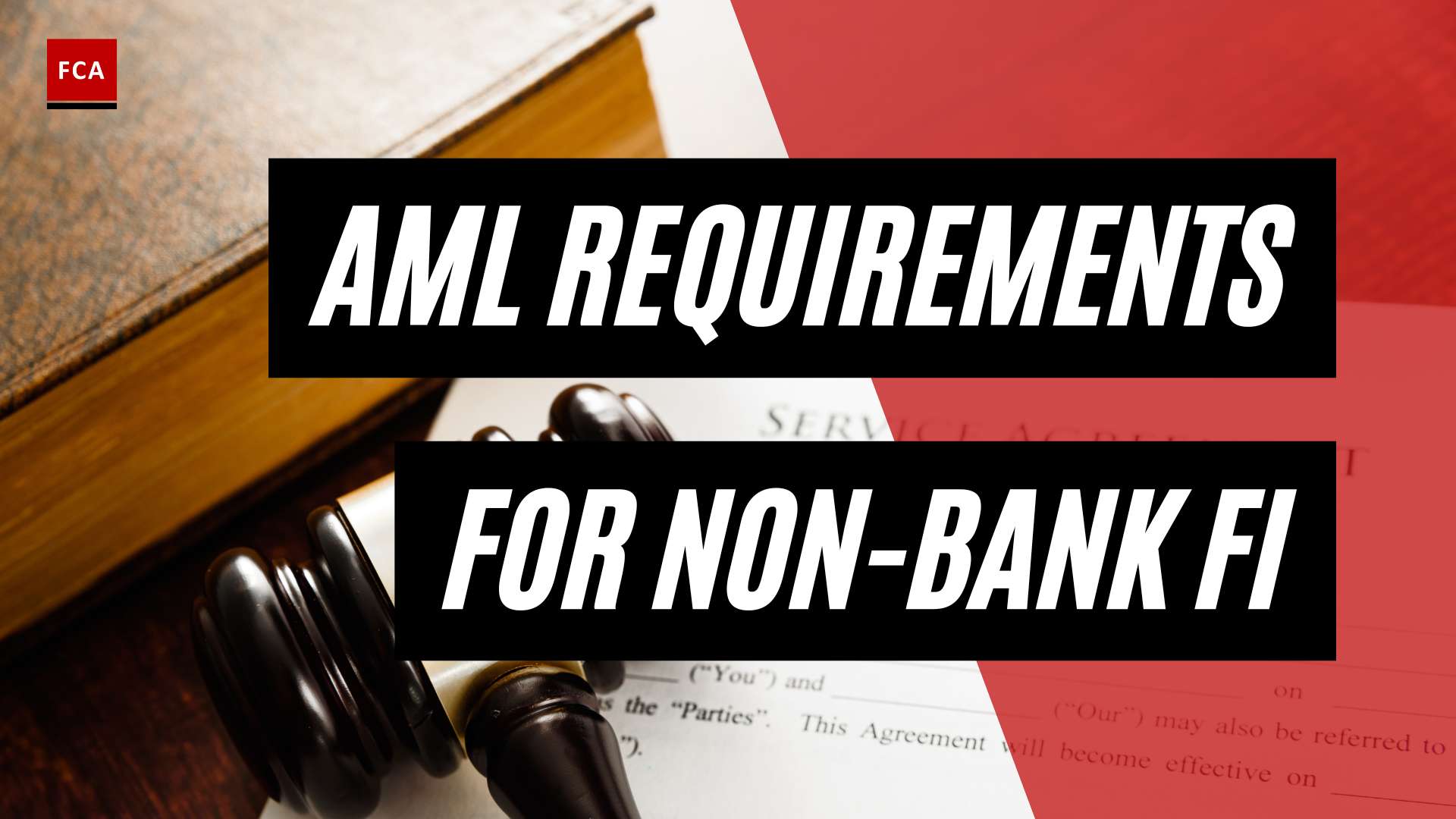Money Laundering Through Real Estate
Money laundering, the process of making illegally obtained funds appear legitimate, is a pervasive issue in the global financial system. One method criminals employ to launder illicit proceeds is through the use of real estate transactions. By channeling funds through real estate, criminals can obscure the origin of the money and integrate it into the legitimate economy.
Introduction to Money Laundering
Money laundering is a complex process that typically involves three stages: placement, layering, and integration. During the placement stage, the illicit funds are introduced into the financial system. In the subsequent layering stage, transactions are conducted to obscure the money’s origin and create a complex web of transactions to make tracing difficult. Finally, in the integration stage, the illicit funds are mixed with legitimate funds, making it challenging to distinguish between the two (Unit21).
Real Estate as a Money Laundering Vehicle
Money laundering through real estate is not a new phenomenon and has been used for centuries as a means to legitimize illicit funds. The real estate sector provides attractive opportunities for money laundering due to its size, complexity, and the potential for anonymity. Criminals take advantage of various vulnerabilities within the sector, such as lax regulation, inconsistent due diligence practices, and the use of shell companies or trusts to conceal beneficial ownership.
From 2015 to 2021, over $2.3 billion was laundered through US real estate alone, highlighting the significant scale of money laundering activities within the sector (ComplyAdvantage). Certain countries, including the US, UK, Australia, Canada, and Germany, are recognized as global hubs for money laundering through real estate. Specific hotspots, such as London, Toronto, Vancouver, and New York, have emerged as key locations for illicit real estate transactions.
To combat money laundering through real estate, regulatory authorities and law enforcement agencies have been implementing measures to enhance transparency, strengthen due diligence requirements, and improve coordination between different stakeholders. Real estate professionals play a crucial role in this fight against money laundering by conducting thorough Know Your Customer (KYC) due diligence, identifying suspicious transactions, and reporting unusual activities to the appropriate authorities.
By understanding the typologies, red flags, and methods used in money laundering through real estate, professionals working in compliance, risk management, anti-money laundering, and anti-financial crime can play a vital role in preventing and detecting illicit activities within the real estate sector. The consequences of allowing money laundering to persist in real estate are significant, as it undermines the integrity of the market, enables criminal activities, and distorts property prices (Sumsub). It is crucial for stakeholders to remain vigilant and continually adapt their anti-money laundering efforts to stay one step ahead of sophisticated money laundering schemes.
Red Flags for Money Laundering in Real Estate
To prevent money laundering through real estate transactions, it is crucial to be aware of the red flags that may indicate illicit activities. The following are some common red flags that professionals should watch out for:
Cash Transactions Below Reporting Threshold
One red flag for potential money laundering is multiple cash transactions below the reporting threshold. Criminals may engage in numerous small cash transactions to avoid triggering reporting requirements, which vary by jurisdiction. These transactions can be an attempt to layer funds and obscure their origin. Professionals involved in real estate transactions should be vigilant when encountering multiple cash transactions below the reporting threshold, as they could be indicative of illicit activities.
Use of Shell Companies or Trusts
The use of shell companies or trusts to purchase properties is another red flag for money laundering. Shell companies and trusts can be employed to obscure the true ownership of real estate, making it difficult to trace the origin of funds. Criminals may hide behind these entities to mask their identities and launder illicit proceeds. Professionals should exercise caution when dealing with transactions involving shell companies or trusts, conducting enhanced due diligence to verify the legitimacy of these entities.
Transactions with Politically Exposed Persons (PEPs)
Engaging in real estate transactions with politically exposed persons (PEPs) can also raise suspicions of money laundering. PEPs are individuals who hold prominent public positions, either domestically or internationally. Due to their positions of power, they may be more susceptible to corruption and involvement in illicit activities. Transactions with PEPs can present a higher risk of money laundering, as they may use real estate purchases to conceal illicit funds or engage in bribery and corruption schemes. Real estate professionals should be diligent in identifying and conducting enhanced due diligence on transactions involving PEPs.
High-Risk Jurisdictions
Transactions involving properties in high-risk jurisdictions can be indicative of money laundering. These jurisdictions may have weak anti-money laundering regulations or a history of facilitating illicit financial activities. Criminals may target real estate markets in these jurisdictions to exploit vulnerabilities and launder money. Real estate professionals should exercise caution when dealing with transactions involving high-risk jurisdictions and perform enhanced due diligence to ensure compliance with anti-money laundering regulations.
By being aware of these red flags, professionals working in compliance, risk management, anti-money laundering, and anti-financial crime can better identify potential money laundering activities in real estate transactions. It is important to implement robust due diligence processes, report suspicious transactions, and cooperate with relevant authorities to combat money laundering effectively.
Notable Cases and Statistics
Money laundering through real estate has become a prominent issue worldwide, with significant sums of illicit funds being funneled into the real estate market. Understanding the scale and examples of money laundering in real estate is crucial in combating this illicit practice.
Global Scale of Money Laundering in Real Estate
The global scale of money laundering in real estate is staggering. According to Global Financial Integrity, over $2.3 billion was laundered through US real estate from 2015 to 2021 alone (ComplyAdvantage). This highlights the magnitude of the problem and the need for robust anti-money laundering measures within the real estate sector.
Countries such as the United States, United Kingdom, Australia, Canada, and Germany have emerged as major hubs for money laundering through real estate. Hotspots for such activities have been identified in cities like London, Toronto, Vancouver, and New York. These locations attract money launderers due to factors such as high property values, stable markets, and potential anonymity.
In the United Kingdom, Transparency International found that £1.5 billion worth of property, primarily in London, was acquired by individuals accused of corruption. This involved thousands of companies associated with Russian money laundering and corruption cases (ComplyAdvantage). These cases underscore the need for increased diligence and regulation to prevent money laundering activities from infiltrating the real estate market.
Examples of Money Laundering in Real Estate
Notable cases of money laundering in real estate serve as stark reminders of the impact and consequences of this illicit practice. One such case involves Zamira Hajiyeva, the wife of jailed Azerbaijani banker Jahangir Hajiyev. She faced the potential loss of her London home and a golf club worth over £22 million ($31 million) due to suspicions of money laundering. The British National Crime Agency believed that her significant fortune was amassed through money laundering, utilizing front companies associated with her imprisoned husband (Sumsub).
These examples highlight how real estate can be exploited to hide and legitimize illicit funds. Criminals launder an estimated $1.6 trillion through real estate annually, emphasizing the urgent need to address and prevent money laundering activities within the real estate sector (Sumsub).
By understanding the global scale of money laundering in real estate and examining real-life examples, we can better comprehend the magnitude of the issue and the importance of implementing robust anti-money laundering measures. It is crucial for real estate professionals, regulatory bodies, and law enforcement agencies to work together to detect, prevent, and deter money laundering activities within the real estate sector.
Role of Real Estate Professionals in Combating Money Laundering
Real estate professionals play a crucial role in combating money laundering by implementing various strategies and practices. These professionals are at the forefront of transactions and are well-positioned to identify and report any suspicious activities. Here are some key aspects of their role in preventing money laundering through real estate.
Know Your Customer (KYC) Due Diligence
Real estate professionals are responsible for conducting thorough due diligence on their customers as part of the Know Your Customer (KYC) process. This involves verifying the identity of buyers, sellers, and other parties involved in the transaction. By verifying identities, real estate professionals can ensure that they are not inadvertently facilitating money laundering schemes.
During the KYC process, real estate professionals should collect and verify relevant identification documents from their customers. This includes obtaining copies of government-issued identification, such as passports or driver’s licenses. Additionally, they should gather information about the source of funds and the purpose of the transaction.
Identifying Suspicious Transactions
Real estate professionals must be vigilant in identifying suspicious transactions that may indicate potential money laundering activities. They should be aware of common red flags that may arise during a transaction, such as:
- Cash transactions below the reporting threshold: Transactions conducted with large amounts of cash just below the reporting threshold can be an indicator of money laundering.
- Use of shell companies or trusts: Transactions involving the use of complex corporate structures, shell companies, or trusts may be an attempt to conceal the true ownership of the property.
- Transactions with politically exposed persons (PEPs): Deals involving individuals with connections to high-ranking government officials or international organizations can pose a higher risk of money laundering.
- High-risk jurisdictions: Transactions involving properties in countries or regions known for weak anti-money laundering controls or high levels of corruption should be closely scrutinized.
By staying informed about these red flags and being attentive during transactions, real estate professionals can help detect potential money laundering activities and take appropriate action.
Reporting Unusual Activities
Real estate professionals have a legal and ethical obligation to report any unusual activities they encounter during a transaction. If they have reasonable grounds to suspect that a transaction may be related to money laundering, they should promptly report this information to the appropriate authorities, such as the Financial Transactions and Reports Analysis Centre of Canada (FINTRAC).
Reporting unusual activities not only helps combat money laundering but also protects the integrity of the real estate market and contributes to the overall efforts of anti-money laundering initiatives.
Real estate professionals should familiarize themselves with the reporting requirements and procedures specific to their jurisdiction. By doing so, they can fulfill their duty to prevent money laundering and contribute to a safer and more transparent real estate sector.
In conclusion, real estate professionals play a vital role in combating money laundering through real estate. By conducting thorough KYC due diligence, identifying suspicious transactions, and reporting unusual activities, they contribute to the overall efforts of anti-money laundering initiatives and help maintain the integrity of the real estate market.
Regulatory Efforts to Address Money Laundering in Real Estate
To combat the rising threat of money laundering through real estate, regulatory bodies around the world have implemented measures to enhance anti-money laundering (AML) efforts within the real estate sector. These initiatives aim to detect and prevent illicit funds from being laundered through real estate transactions. Here are three key regulatory efforts to address money laundering in real estate:
AML Regulations for Real Estate Agents
In various jurisdictions, real estate agents are now subject to AML regulations and requirements. For instance, the 4th European AML Directive (4AMLD), enacted in 2018, brought real estate agents within its regulatory scope, obligating them to comply with AML requirements, including customer verification (Sumsub). Similarly, estate agents in the United Kingdom have been required to be registered under AML regulations since 2004, aiming to combat the use of real estate in money laundering schemes. In New Zealand, the AML/CFT Act was expanded in 2018 to tackle money laundering activities in the real estate sector, emphasizing the importance of real estate agents understanding how money laundering operates within real estate transactions (First AML).
Strengthening Due Diligence Requirements
To enhance the effectiveness of AML measures, due diligence requirements have been strengthened for real estate professionals. This includes conducting thorough customer due diligence (CDD) procedures, such as verifying the identity of buyers and sellers, assessing the source of funds, and monitoring transactions for suspicious activities. Real estate professionals are now expected to apply risk-based approaches when conducting due diligence, taking into account the potential risks associated with specific transactions and individuals (Sumsub). These measures help identify and prevent money laundering through real estate transactions.
Enhancing Transparency in the Real Estate Sector
Transparency plays a vital role in combating money laundering in real estate. Efforts are being made to increase transparency by implementing measures such as beneficial ownership registers and reporting mechanisms. For instance, in the United Kingdom, the introduction of the Unexplained Wealth Order (UWO) in 2018 allows the court to seize property from individuals who fail to explain the source of their funds (Sumsub). This strict approach serves as a deterrent and promotes transparency within the UK real estate sector. Similar initiatives are being explored in other jurisdictions to enhance transparency and facilitate the detection and prevention of money laundering through real estate.
By implementing these regulatory efforts, authorities aim to create a more robust framework for combating money laundering in the real estate sector. Real estate professionals play a crucial role in these efforts by adhering to AML regulations, conducting proper due diligence, and promoting transparency within their transactions. These measures are essential in protecting the integrity of the real estate market, preventing criminal activities, and reducing the distortion of property prices.
Methods of Money Laundering Through Real Estate
Money laundering through real estate involves various methods and techniques that criminals employ to conceal the illicit origins of funds. Understanding these methods is crucial for combatting this form of financial crime. Here are three common methods used for money laundering through real estate: cash purchases and concealment of ownership, property flipping and inflating property values, and mortgage fraud and loan integration.
Cash Purchases and Concealment of Ownership
Criminals frequently utilize cash to purchase real estate, as it allows them to bypass financial institutions and the scrutiny associated with electronic transactions. Cash purchases provide an opportunity to introduce illicit funds into the real estate market while maintaining anonymity. Criminals often conceal their ownership of the property by using shell companies or hidden property ownership, making it challenging for law enforcement agencies to trace the origins of the funds (Sanction Scanner).
By using intermediaries, such as friends or family members, to transact on their behalf, criminals can distance themselves from the illicit funds and minimize the risk of arousing suspicion. This strategy aims to obscure the link between the criminal and the property, making it more difficult for authorities to investigate.
Property Flipping and Inflating Property Values
Another method employed by criminals is property flipping, which involves rapidly buying and selling properties to create the illusion of legitimate transactions. Criminals manipulate lease agreements, artificially inflate property values, and engage in other fraudulent activities to legitimize the funds derived from criminal activities.
Property flipping allows criminals to introduce illicit funds into the real estate market and subsequently “clean” them by selling the property at an inflated price. This process enables the integration of illicit funds with legitimate ones, making it more challenging to trace the original source of the funds. By manipulating property values, criminals can distort market prices, impacting the overall integrity of the real estate market.
Mortgage Fraud and Loan Integration
Criminals exploit mortgage systems to facilitate money laundering through real estate. They obtain loans or mortgages after purchasing a property, using the mortgage process to layer and integrate illicit funds into high-value assets like real estate. By paying mortgages with funds from criminal activities and subsequently selling the property, criminals attempt to blend illicit funds with legitimate ones, making them harder to trace back.
Mortgage fraud involves submitting false information or misrepresenting the property value to obtain a larger loan than justified. This fraudulent activity further facilitates the integration of illicit funds into the legitimate financial system. By exploiting loans and mortgages, criminals can create a complex web of financial transactions, making it challenging for authorities to detect and investigate the money laundering scheme.
Understanding these methods of money laundering through real estate is crucial for real estate professionals, financial institutions, and law enforcement agencies to detect and prevent illicit activities. By implementing robust anti-money laundering measures, such as enhanced due diligence, transaction monitoring, and reporting suspicious activities, stakeholders can work together to combat money laundering in the real estate sector.
Consequences of Money Laundering Through Real Estate
Money laundering through real estate poses significant risks to the financial system and can have severe consequences. Let’s explore the various consequences associated with this illicit activity.
Undermining the Integrity of the Real Estate Market
Money laundering through real estate undermines the integrity of the market by introducing illicit funds into legitimate transactions. Criminals exploit the high-value nature of real estate transactions to legitimize their ill-gotten gains, making money laundering through real estate one of the most commonly used techniques (Sanction Scanner). The presence of laundered money in the real estate market can distort property values and create an uneven playing field for honest buyers and sellers. This erodes trust and confidence in the market, making it vulnerable to manipulation and instability.
Enabling Criminal Activities
By providing a means to launder illicit funds, money laundering through real estate facilitates various criminal activities. Criminals frequently purchase real estate using cash and conceal their ownership through shell companies or hidden property ownership, making it challenging for law enforcement agencies to trace the illicit origins of funds (Sanction Scanner). The use of real estate for money laundering enables criminals to hide the proceeds of illegal activities, such as drug trafficking, corruption, tax evasion, and organized crime. These illicit funds can then be used to finance further criminal activities, perpetuating a cycle of illegal behavior.
Distortion of Property Prices
Money laundering through real estate can distort property prices, leading to market imbalances and affordability issues. Criminals engage in property flipping, inflate property values, manipulate lease agreements, and commit complex mortgage fraud to facilitate money laundering activities within the real estate industry. These activities can artificially drive up property prices, making it difficult for genuine buyers to enter the market. Distorted property prices not only impact individuals seeking homeownership but also affect rental markets and overall economic stability.
To combat the consequences of money laundering through real estate, regulatory efforts are being implemented to strengthen regulations, enhance due diligence requirements, and improve transparency within the real estate sector. These measures aim to prevent criminals from exploiting the real estate market for money laundering purposes. Real estate professionals play a vital role in this fight by conducting thorough Know Your Customer (KYC) due diligence, identifying suspicious transactions, and reporting unusual activities.
By addressing the consequences of money laundering through real estate, authorities and industry stakeholders can work together to safeguard the integrity of the real estate market and protect it from illicit activities.
Methods of Money Laundering Through Real Estate
Money laundering through real estate is a pervasive issue, with criminals exploiting the high-value nature of real estate transactions to legitimize their ill-gotten gains. This section explores some of the common methods used in money laundering through real estate, including cash purchases and concealment of ownership, property flipping and inflating property values, and mortgage fraud and loan integration.
Cash Purchases and Concealment of Ownership
One of the primary techniques used in money laundering through real estate is the purchase of properties using cash. Criminals often seek to circumvent scrutiny by avoiding digital payment methods, making it harder to trace the origin of funds. Cash transactions provide a level of anonymity and can be used to conceal the true ownership of the property.
To further obscure the ownership, criminals may use shell companies or trusts to purchase properties. These entities can mask the identity of the ultimate beneficiary, making it difficult for law enforcement agencies to trace the illicit origins of funds. The use of anonymous shell companies or trusts is a common red flag for money laundering in real estate transactions.
Property Flipping and Inflating Property Values
Property flipping involves the rapid purchase and sale of properties with the intent to generate profits and launder money. Criminals may acquire properties at below-market prices, invest in minimal renovations or improvements, and quickly resell the properties at inflated prices. This process allows them to introduce illicit funds into the legitimate real estate market while creating the appearance of legitimate transactions.
Inflating property values is another technique used in money laundering through real estate. By artificially increasing the value of a property, criminals can legitimize their funds and generate significant profits when the property is sold. This method can involve collusion between real estate professionals, appraisers, and other parties involved in the transaction.
Mortgage Fraud and Loan Integration
Mortgage fraud is a common method used to launder money through real estate. Criminals may manipulate the mortgage application process by providing false information about their income, assets, or employment to obtain a mortgage loan. The illicit funds are then introduced into the real estate market through the loan proceeds.
Loan integration is another technique employed in money laundering through real estate. Criminals may acquire legitimate loans using illicit funds and use the loan proceeds to purchase properties. This method creates the appearance of legitimate transactions and allows criminals to distance themselves from the illegal origins of the funds.
It is important for real estate professionals, regulatory authorities, and financial institutions to remain vigilant and implement robust anti-money laundering (AML) measures to detect and prevent these money laundering methods. By recognizing the red flags associated with these techniques and reporting suspicious transactions, stakeholders in the real estate sector can contribute to the fight against money laundering.
Money laundering through real estate undermines the integrity of the real estate market, enables criminal activities, and distorts property prices. Regulatory efforts are being made to address this issue, including the implementation of AML regulations for real estate agents, the strengthening of due diligence requirements, and the enhancement of transparency in the real estate sector. By working together and adopting a risk-based approach, stakeholders can better combat money laundering through real estate and protect the integrity of the financial system.









